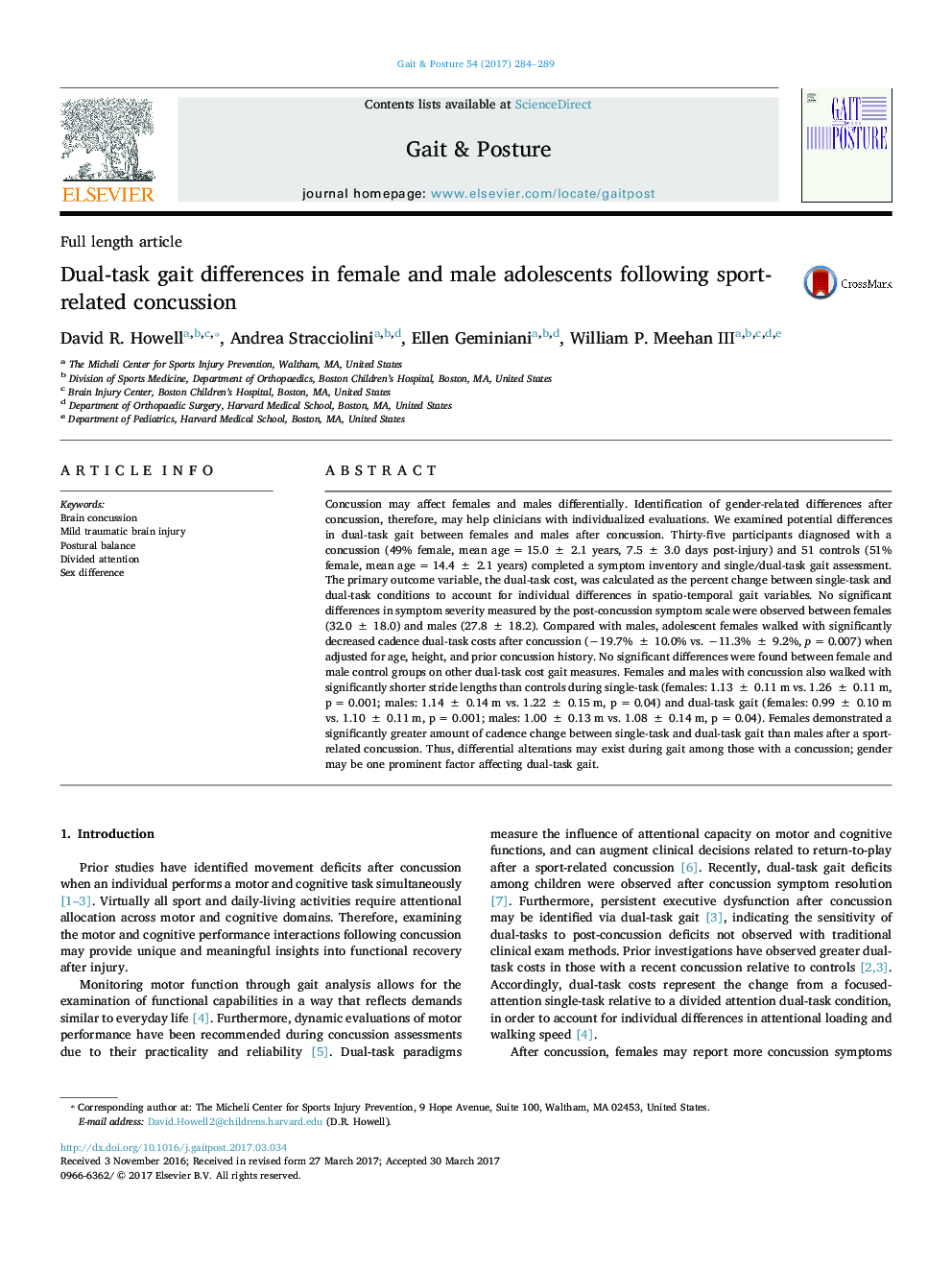| کد مقاله | کد نشریه | سال انتشار | مقاله انگلیسی | نسخه تمام متن |
|---|---|---|---|---|
| 5707932 | 1603841 | 2017 | 6 صفحه PDF | دانلود رایگان |
عنوان انگلیسی مقاله ISI
Dual-task gait differences in female and male adolescents following sport-related concussion
ترجمه فارسی عنوان
اختلاف راه رفتن دو طرفه در نوجوانان زن و مرد پس از ضربه مغزی ورزشی
دانلود مقاله + سفارش ترجمه
دانلود مقاله ISI انگلیسی
رایگان برای ایرانیان
کلمات کلیدی
صدمه مغزی، آسیب مغزی ضعیف خفیف، تعادل ظریف تقسیم توجه، تفاوت جنسی،
موضوعات مرتبط
علوم پزشکی و سلامت
پزشکی و دندانپزشکی
ارتوپدی، پزشکی ورزشی و توانبخشی
چکیده انگلیسی
Concussion may affect females and males differentially. Identification of gender-related differences after concussion, therefore, may help clinicians with individualized evaluations. We examined potential differences in dual-task gait between females and males after concussion. Thirty-five participants diagnosed with a concussion (49% female, mean age = 15.0 ± 2.1 years, 7.5 ± 3.0 days post-injury) and 51 controls (51% female, mean age = 14.4 ± 2.1 years) completed a symptom inventory and single/dual-task gait assessment. The primary outcome variable, the dual-task cost, was calculated as the percent change between single-task and dual-task conditions to account for individual differences in spatio-temporal gait variables. No significant differences in symptom severity measured by the post-concussion symptom scale were observed between females (32.0 ± 18.0) and males (27.8 ± 18.2). Compared with males, adolescent females walked with significantly decreased cadence dual-task costs after concussion (â19.7% ± 10.0% vs. â11.3% ± 9.2%, p = 0.007) when adjusted for age, height, and prior concussion history. No significant differences were found between female and male control groups on other dual-task cost gait measures. Females and males with concussion also walked with significantly shorter stride lengths than controls during single-task (females: 1.13 ± 0.11 m vs. 1.26 ± 0.11 m, p = 0.001; males: 1.14 ± 0.14 m vs. 1.22 ± 0.15 m, p = 0.04) and dual-task gait (females: 0.99 ± 0.10 m vs. 1.10 ± 0.11 m, p = 0.001; males: 1.00 ± 0.13 m vs. 1.08 ± 0.14 m, p = 0.04). Females demonstrated a significantly greater amount of cadence change between single-task and dual-task gait than males after a sport-related concussion. Thus, differential alterations may exist during gait among those with a concussion; gender may be one prominent factor affecting dual-task gait.
ناشر
Database: Elsevier - ScienceDirect (ساینس دایرکت)
Journal: Gait & Posture - Volume 54, May 2017, Pages 284-289
Journal: Gait & Posture - Volume 54, May 2017, Pages 284-289
نویسندگان
David R. Howell, Andrea Stracciolini, Ellen Geminiani, William P. III,
